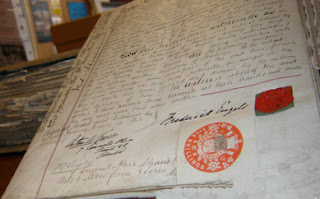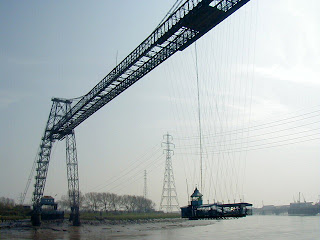Engels and the bridge builder
In November 2011 Kate Jarman, an archivist at Brent Archives, was going through some old mortgage documents when the name on one of them caught her eye. The property was a new house in Willesden Lane built by Samuel Blasby and Henry Hodges, who also built other houses in the Brondesbury area. The date on the mortgage was 25 March 1883 and the signature was that of Friedrich Engels, the joint author with Karl Marx of the Communist Manifesto (1848). This was previously unknown information about Engels.
 |
| Mortgage with signature of Friedrich Engels at Brent Archive |
Engels lived at 122 Regent’s Park Road Primrose Hill, from 1870 until his death in 1895. He had left his job as a mill owner in Manchester and moved to London to be near Marx, whom he saw every day at his house in nearby Maitland Villas. Engels obviously bought the Kilburn property as an investment: in June 1886 it was rented to Alfred and Fanny Emma Thorne and they bought it from him on 1 December 1887. Thorne and his family continued to live there until 1912.
 |
| Friedrich Engels |
The house was originally called ‘Kings Legh’ in various documents, although it sometimes appears with the spelling King’s Leigh. It was about half way along Willesden Lane, near the corner with Coverdale Road. When the area was re-numbered about 1886 it became 191 Willesden Lane. From the time of his marriage in 1875 until 1886, Alfred Thorne had lived on the Hampstead side of Kilburn at 25 St George’s Road, now named Priory Terrace which runs from Belsize Road to Abbey Road. He was born in Scotland in 1847 and became a civil engineer. Alfred Thorne and Sons of 7 Cartert Street, Westminster, specialised in bridge building.
 |
|
Newport Transporter Bridge
|
In 1906 they built the Newport transporter bridge. In 1908 they constructed the 292 feet long swing bridge at Littlehampton to replace the old ferry over the river Arun. The bridge linked Littlehampton to the towns of Portsmouth, Worthing, Bognor and Chichester.
 |
| Littlehampton Swing Bridge |
They also built the footbridge bridge to the Mizen Head fog-signal station in County Cork Ireland, in 1909 at a cost of £1,272. In 1911 the company built the Warrington bridge. Previously Thorne and Sons had constructed Pembroke pier in 1899.
 |
| Mizen Head Bridge, at the southern most point of Ireland |
Alfred Thorne died at ‘Woolhara’ Haddenham, Bucks on 7 June 1923. He left £1,493 to his sons, Alfred John Parker Thorne and Douglas Stuart Thorne, who were both engineers in his company. His widow Fanny Emma Thorne died at ‘Woolhara’ in 1938.
From 1980 to 2004 the house at 191 Willesden Lane was called ‘Homelea’ and was a Brent hostel for 11 mentally handicapped adults. In 2008 Brent Council approved demolition and it was rebuilt in a PFI scheme by Bouygues UK. They completed the seven flats in 2011 for Brent social housing.

So the mortgage was signed on 25th March 1883; that was just 11 days after Karl Marx’s death, so surely there must be a connection there somewhere??
Hi Peter,
I cannot find another connection between Marx or Engels and Kilburn.
As you know Engels provided financial support for Marx throughout their friendship, so it can’t be that he left money in his will which Engels invested in this house. I think Engels bought the new house as an investment and it just a coincedence that it was just after Marx’s death.
Dick